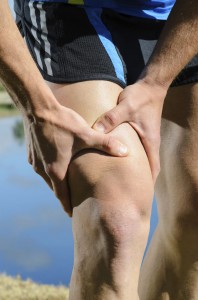 Fascia’s not main-stream yet but it’s getting there. A new appreciation of fascia has begun throughout the health and well-being industries as a way of explaining and treating injuries, but fascia is something we Bowen therapists have been working with and on for years. You could say we’re fascinated with fascia.
Fascia’s not main-stream yet but it’s getting there. A new appreciation of fascia has begun throughout the health and well-being industries as a way of explaining and treating injuries, but fascia is something we Bowen therapists have been working with and on for years. You could say we’re fascinated with fascia.
Injuries and a wide range of health problems may be treated by working on the fascia, including babies with colic, adults with work related injuries, continual compromised posture, seniors with any of the problems that are common with old age and athletes with acute or chronic injuries.
In case you haven’t already heard of fascia it’s a connective tissue made mainly from tightly woven collagen fibres which surround every other tissue of the body including our nerves, bones, arteries, veins and muscles.
Every single part of your anatomy is encased in and connected by fascia. It wraps around your individual internal parts keeping them apart and lubricating them for easy movements. Fascia keeps your body taut, it’s your body’s first line defense against injury and it’s the first place health problems or injuries should be treated.
Despite all that fascia hasn’t been studied much because the medical world has struggled to understand what its real function is but it’s certainly more than just packaging that holds our bones and muscles together under our skin. Fascia is vital for every movement you make and every injury you’ve ever had but, until a few years ago, nobody paid it much attention.
The first international Fascia Research Congress was held at Harvard Medical School in 2007 and since then medical professionals and body workers, including Bowen therapists, have been trying to learn as much about it as they can.
You can find out more about fascia here but Tom Myers, author of Anatomy Trains, was one of the first medical professionals to study and understand fascia in the human body and he explains why fascia is so vital to our well-being:
“While anatomy lists around 600 separate muscles, it is more accurate to say that there is one muscle poured into six hundred pockets of the fascial webbing. The ‘illusion’ of separate muscles is created by the anatomist’s scalpel, dividing tissues along the planes of fascia. This exploratory process should not blind us to the reality of the unifying whole.”
Here’s why Bowen therapists love facsia
1. Fascia holds human bodies together
Fascia organises muscles into functional units. Each muscle layer is surrounded by fascial sheaths. The outermost fascial sheath is the epimysium which organises muscle and keeps it separate from the surrounding tissue.
2. Fascia is essential for our physical well-being
Scar tissue is made of bunched up, disorientated and dehydrated fascia but it’s vital for injury repair too. Bowen therapy helps to re-orientate these fibres so it helps with the rehabilitation process.
3. Fascia affects how our muscles work
Although scar tissue is useful, if muscle groups are underused and don’t work together, then fascial sheaths can start to stick together creating adhesions which can then cause the muscles to lose independent movement and cause pain. Lack of activity also causes once-supple fascia fibres to harden into place and restricts movement even further.
4. Fascia affects how our bodies move
Adhesions can also form within fascial layers as cross linkages which can pull bones out of alignment causing bad posture or restricted movement. Poor posture, lack of flexibility and repetitive movements can damage the fascia creating adhesions, which are difficult to break down.
5. Fascia is affected by and affects your mental and physical health
Fascia impacts the way you move physically but it’s also a sense organ which can contract independently of the muscles it surrounds and respond to stress without conscious command. Chronic stress causes the fascia fibres to thicken in an attempt to protect the underlying muscle.
The good news is that any damage you’ve caused your fascia is often resolved with between one and three Bowen treatments.
The term fascia isn’t main-stream yet but it should be, especially for those in the health and wellbeing industry and for all body workers, not just for Bowen therapists. Let’s all embrace this amazing communication network and take health care to a new level.
Interested in becoming a Bowen therapist?
Check out our training pages for more information and details on courses on the Sunshine Coast and in Adelaide.




Pingback: Fantastic fascia and why Bowen Therapists love it | Bowen Training Australia BLOG
Pingback: Bowen Therapy for the Tech Generation »